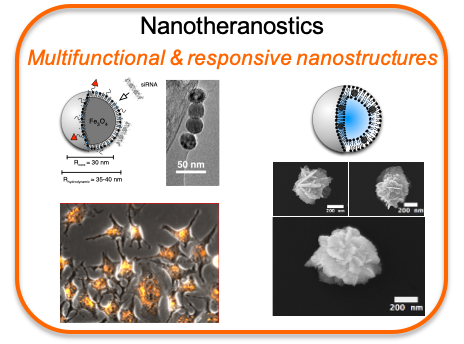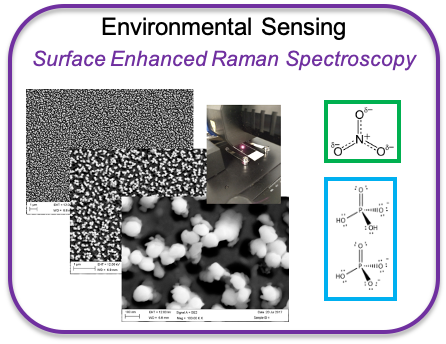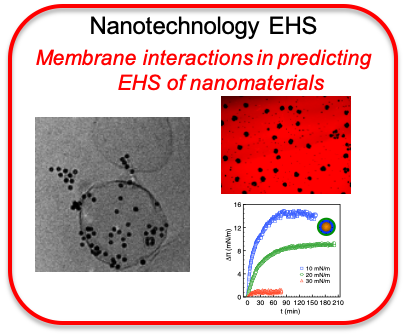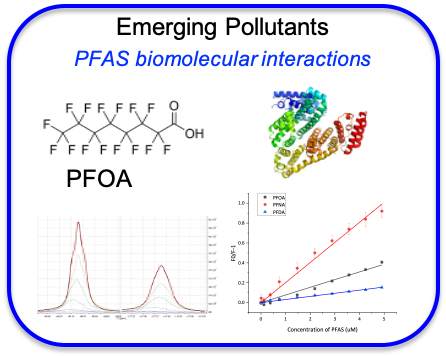We apply fundamentals of bio/nanotechnology, colloidal and interfacial phenomena, and material synthesis in combination with applied aspects of chemical engineering to advance biomedicine and environmental health and safety.

Soft templating approaches are used to create complex nanotheranostic particles that are responsive to minimally invasive electromagnetic fields. The goal of this work is to achieve multiple therapeutic objectives – imaging, sensing, stimuli-responsive drug delivery, and localized hyperthermia – in a single nanoscale platform to overcome barriers to disease diagnosis and treatment.

Surface Enhanced Raman Spectroscopy (SERS) is being used to detect pollutants in coastal ecosystems. These include nutrient pollutants such as nitrate and phosphate, which in excess can lead to eutrophication, and persistent organic pollutants such as perfluoroalkyl substances (PFASs), which bioaccumulate and are toxic. The goal of this work is to develop sensitive, deployable sensors that will improve detection in the field and reduce exposure risk.

Interactions with cellular membranes play an important role in determining the biological activity of nanoparticles, whether adverse (e.g. leading to cytotoxicity) or beneficial (e.g. facilitating intracellular drug delivery). The goal of this work is to utilize model and reconstituted cell membranes to determine interaction mechanisms based on nanoparticle composition, size, and surface chemistry that will aid the development of safe, sustainable nanotechnologies. We have recently begun to apply these approaches to micro- and nano-plastics in coastal ecosystems (see link).

PFASs are non-degradable pollutants found globally in our environment and in humans. PFAS exposure has been linked to metabolic and developmental disorders, as well as disease. The goal of this work is to determine the molecular mechanisms that lead to protein binding and lipid partitioning under environmentally and physiologically relevant conditions. With over 5,000 known PFASs present in the environment, molecular mechanisms are needed to predict bioaccumulation and biodistribution.
